People respond differently in same or different situations. But oppressive times invite either a response or a reaction — for not all of us have the ability to respond. However, the onus of it is always on the receiving end. If the receiving end — usually women, marginalized communities, or even a gullible country etc. — reacts, then it’s not able to register a real victory against the oppressors. It’s when they respond, and what better than with art, then, not only they’re able to emerge victorious, but also inspire and ignite a conversation, create a new discourse and leave for generation to come materials of artistic value.
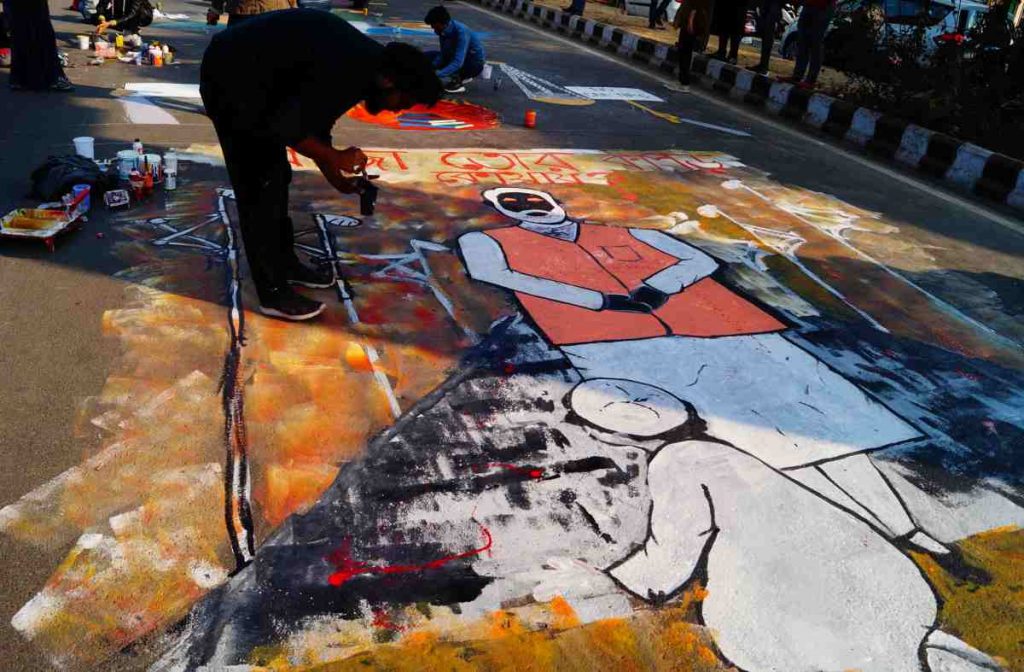
Image Source: Live Wire
Think: why do we, in schools and colleges, are made to read literature — which wasn’t produced out of will, but out of helplessness — or work of art produced during the oppressive times or regime? We will never have a masterpiece like Man’s Search for Meaning had Viktor E. Frankl never been sent to a concentration camp, and instead of making it worse for himself by bowing down to the S.S., he chose to cling onto the hope to meet his wife, while always documenting everything that happened in the camp and devised methods — logotherapy — to treat people in the dire circumstances.
“Each time a writer or an artist ‘tells’ the world in an ever so slightly new fashion, it is changed.” — Claude Simon
The Situation Facing Us Today
The ruling party in India, the Bharatiya Janata Party (BJP), would never be what it is today had there never been a series of student-run protests during the ’70s that paved the way for its formation and the fall of Congress post-declaration of the Emergency by the then Prime Minister, Mrs. Indira Gandhi. What Gandhi thought then, that she can control the nation, is exactly what Narendra Modi thinks he and his party can do. The only difference, however, is that Gandhi declared Emergency publicly, and Modi didn’t.
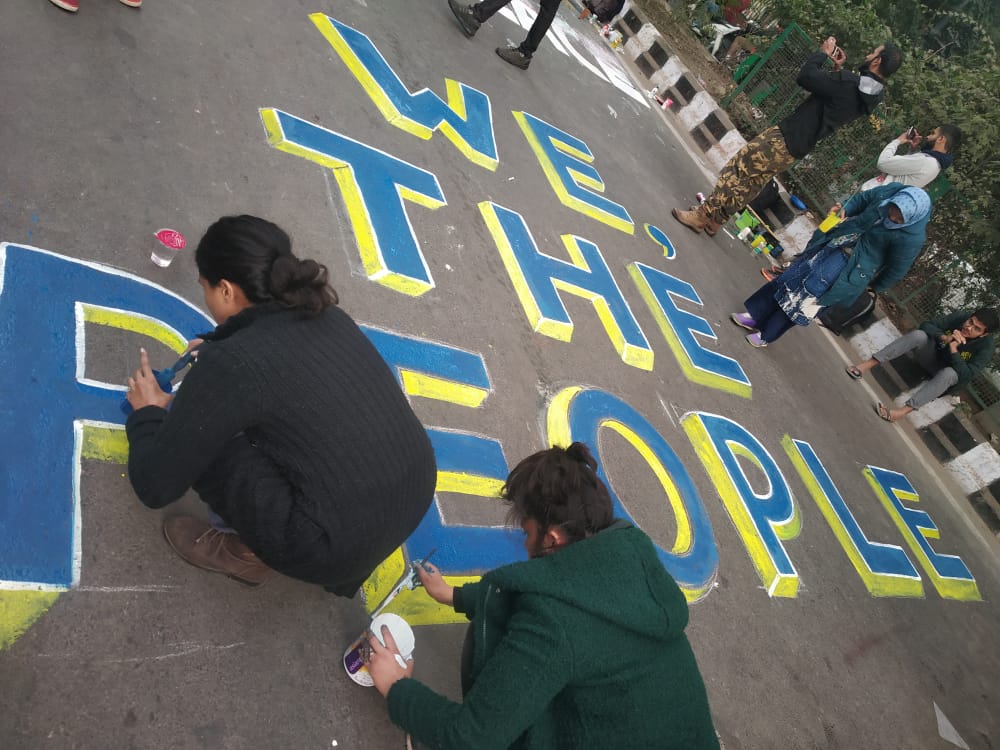
Much like the ’70s — and, in fact, worse — we’re witnessing an authoritative and oppressive regime. We’re fighting, but, as I wrote above, we’re responding not reacting, which the government wants us to. I ardently believe that times of oppression produce the best of art. A work of art, i.e., creation, in itself is an act of rebellion. And that’s what we do when someone, a group of people, an organization, or a country tries to oppress us. Of course, by we I meant all those people who’re in the domain of art.
Why Is A Work of Art An Act Of Rebellion?
Before this article proceeds with the ways in which people responded to the state-sponsored oppression against the peaceful protests they staged against the Citizenship Amendment Act (CAA), we need to pause for a moment to understand why a work of art is an act of rebellion. As physics would explain this, everything, by its virtue, tend to remain in its original state — inertia. Nothing changes organically. And an external force is required to alter that state. So creating anything involves just that: producing something anew, changing something and reinventing its form from its erstwhile version.
By that definition, however, whatever the oppressor does can be easily called a work of art. Won’t it, you ask?
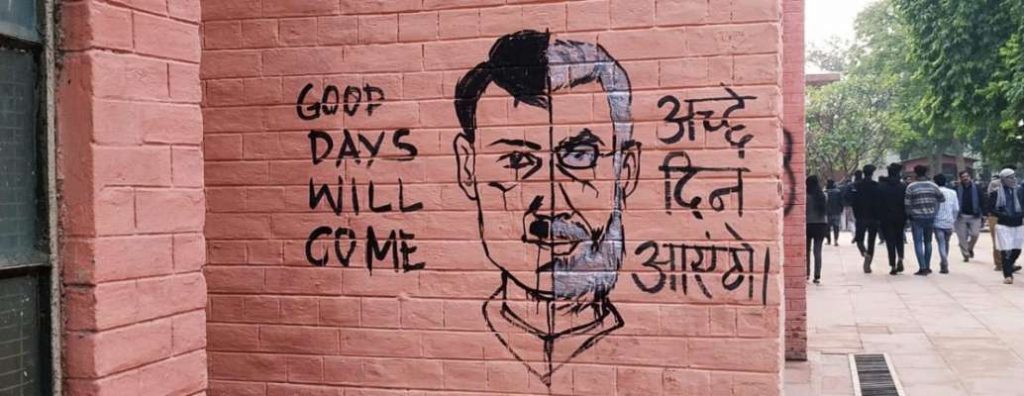
No. Because oppressors are never game for change; they’re the ones who need constancy in what they determine. And that’s what we saw recently, in the ongoing protests against the passing of CAA and its further assent by the President of India. The BJP’s idea of India is hell-bent on creating a singular narrative for the nation — one language, one religion, and one political party. The establishment shun and discourage all acts of opinion against what they create. Hence, whatever they’re doing is far from art. Leave alone, it’s not even some sort of a creation; it, in fact, is a highway to hell. Shoving down our throats their idea of India, nation, nationalism and patriotism. Interestingly none of the BJP members and their leadership — the 56-inch Gujarati Elvis; the right-hand to him, our Home Minister — understand what any of those terms mean.
Anti-CAA, Anti-NRC Art Works That Won Our Hearts
When traditional media outlets shied away from doing their job, the students and the members of civil society took on themselves the onerous task of speaking truth to power. And that too with art. Fear is an instrument of the oppressive regime, and BJP tried to instill and deter people with that; but it miserably failed. Students and general public took to the streets, they brought creative posters with them. They created and shared memes, decorated the streets with rangolis, sang revolutionary songs, recited protest poetries, and sent the signal loud and clear to the BJP and their allies: We won’t let India become Nazi Germany. Make no mistake about it.
Many have said that they’ve not seen such turnout in the protests against CAA and NRC since the Emergency. Below is a collage of some extremely creative posters that people displayed during the protests.
Source: The News Minute and BuddyBits
Be it posters asking people to give the needy, Amit Shah, a book — the Constitution of India, commentary on PM’s remark that he can “identify people with their dresses,” or calling PM 2.0 worse than PM 2.5, I found all of them hysterical.
While that was happening on the streets. It’s also heartening to see that many popular names began posting their opinions on social media, and raised their voices against the crudeness of CAA and NRC. Among them were Mohammed Zeeshan Ayyub, Siddharth Suryanarayan, Swara Bhaskar, and Anurag Kashyap; but something that trended last year and became, what we call in the language of social media, “viral” was lyricist and comedian Varun Grover’s poem “Hum Kaagaz Nahi Dhikayenge” (literal translation: We Won’t Show Papers). The moment he posted this, several people asked for its transcription. Which he did. And it didn’t take long for people to translate this into several languages in order to build readership and help this to reach to the masses.
Source: Twitter
However, other lesser-known artists have been making a huge impact too. Here’s one powerful poem by Amir Aziz, shared by The Wire on their YouTube channel, “Yeh Hain Jamia Ki Ladkiyan.” Varun Grover also tweeted a video by BBC News where Amir Aziz is reciting one of his poems on Twitter and wrote: “Amir Aziz is the voice and clarity we need.”
Anurag Kashyap, who has an eye for finding indigenous talent, posted on Twitter the YouTube link to Madara Music’s song Tukde Tukde Gang? A powerful music video that everyone must watch.
Delhi-based writer and poet Akhil Katyal also posted several poems recently on Instagram. Below is a collage of the two powerful poems he wrote. Kaghzaat (Documents/Papers) addresses the inherent corruption that seems essential for producing a document in India. And the second, Naagrikta (Citizenship), directly criticizes the government, who is thinking that citizenship provision is some sort of a charity on its citizens.
Dedicating this poem to the women protesting in Shaheen Bagh, Anshu Malviya wrote:
रफ़्ता-रफ़्ता सँवर रहा है , अपने संघर्षो का बाग़
शाहीन बाग़ , शाहीन बाग़ , शाहीन बाग़, शाहीन बाग़
कदम -कदम पर निखर रहा है अपनी उम्मीदों का ख़्वाब
शाहीन बाग़, शाहीन बाग़, शाहीन बाग़, शाहीन बाग़
जलते अंगारों पे नंगे पाँव चला है इन्क़लाब
हर नुक्कड़ चौरस्ते , शहर- ओ -गाँव चला है इन्क़लाब
हमको आवाज़ें देता हर ठाँव ठाँव ये इन्क़लाब
बापू , बाबा और भगत का सपना है ये इन्क़लाब
इन्क़लाबो , इन्क़लाबो , इन्क़लाबो , इन्क़लाब
शाहीन बाग़, शाहीन बाग़, शाहीन बाग़, शाहीन बाग़
हमसे कागज़ क्या माँगे हो , अपना परिचय इन्क़लाब
हमसे जात धरम ना पूछो, अपना मज़हब इन्क़लाब
दौड़ रहा अपनी नस-नस में भारत, बोलो इन्क़लाब
इन्क़लाब की बस्ती के बाशिंदे, हम सब इन्क़लाब
इन्क़लाबो , इन्क़लाबो , इन्क़लाबो , इन्क़लाब
शाहीन बाग़, शाहीन बाग़ , शाहीन बाग़, शाहीन बाग़
आज़ादी के गद्दारों से बढ़कर बोलो इन्क़लाब
लाठी – गोली खाओ सारे जमकर बोलो इन्क़लाब
हैं कदम बढ़े पीछे न हटे अब सारे बोलो इन्क़लाब
अशफ़ाक़ -ओ -बिस्मिल का नारा , नारा बोलो इन्क़लाब
इन्क़लाबो , इन्क़लाबो , इन्क़लाबो इन्क़लाब
शाहीन बाग़, शाहीन बाग़, शाहीन बाग़, शाहीन बाग़
Not only what is colloquially called the “serious” forms of art, several people posted memes too. Last year, on March 16, 2019, I attended a full-day workshop on ‘Making Red Books’ where I first saw this image below. Orijit Sen, the renowned graphic designer and artist, whose graphic novel River of Stories is often touted as the first of India, was taking us through many of his works. A couple of days ago, he shared the same on Facebook, aligning with the recent controversy on Faiz Ahmed Faiz’s poem “Hum Dekhenge.”
There were other Pop Culture memes too. For example, this one below of “Yogi Diesel” posted on Instagram by @edict.ashoka, seeing which I laughed rumbustiously.
In Chennai, and other parts of India as well, many protesters, mainly women, took to the streets and started making Rangolis (Kolam). Interestingly Chennai Police Chief said those people had links with Pakistan. This accusation has become very commonplace these days. Whenever we say, write or do anything that’s holding the government accountable we’re automatically labelled Pakistanis. Sometimes I feel like the BJP and their allies might be opening free bus rides to Pakistan. I’m boarding one soon.
And to continue fighting in this spirit, here’s one creative poster, which just made the job of people posting details of protests easier, Sanitary Panels (@sanitarypanels) shared this image, below, on Twitter. A tweet read: “TEMPLATE – feel free to use this graphic and add in details to spread the word about a protest or an event against CAA.”
In times like these, when Internet is shutdown, several states are locked down and there’s a direct attack on democracy, all that we have to do is resist. It’s not our privilege, but a necessity. And I’m sure that art, once again, will help us do that. It’s our best weapon of resistance against oppression.
Inquilaab Zindabaad!
Featured Image Source: Latestly Hindi
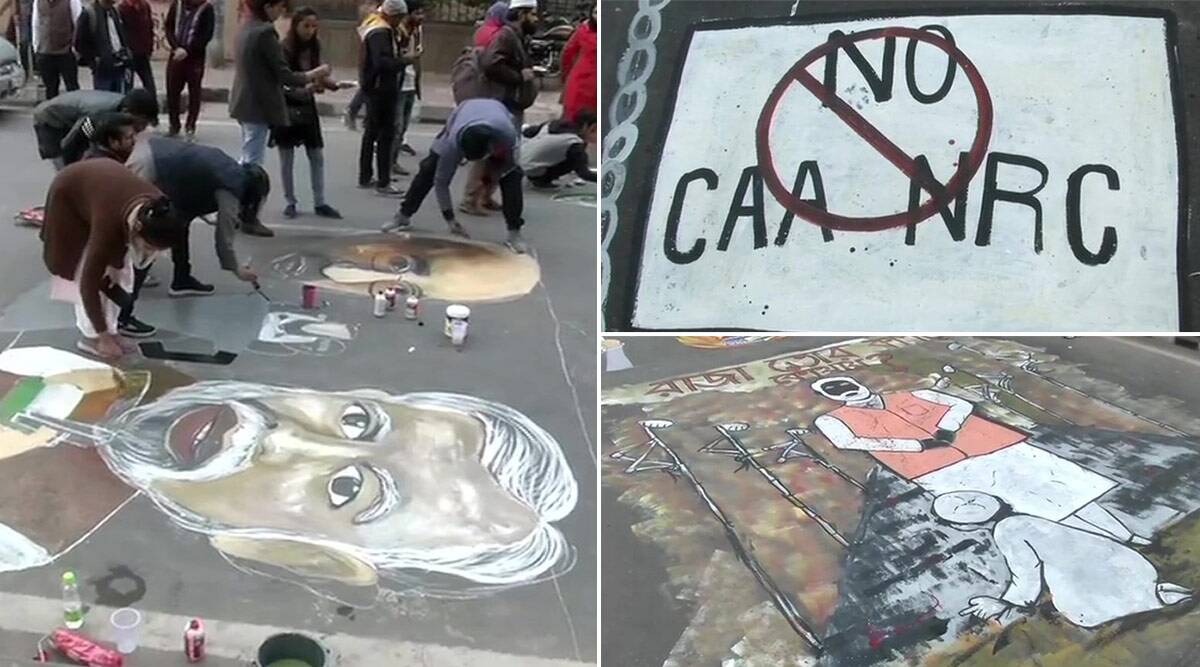

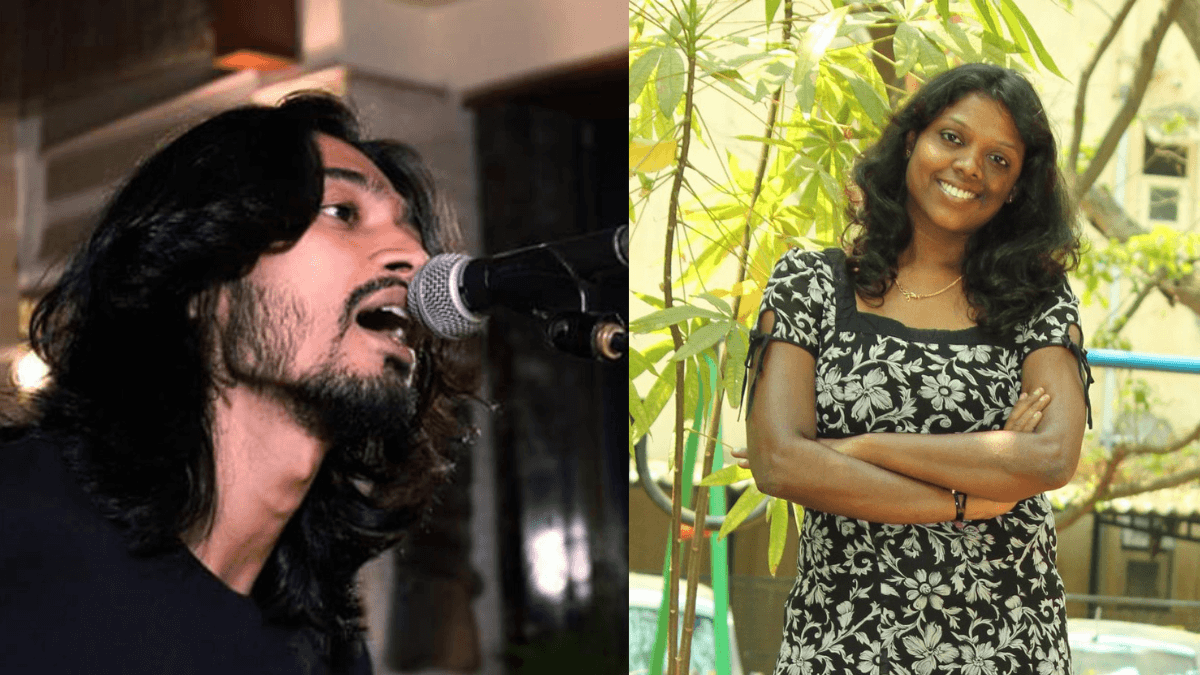
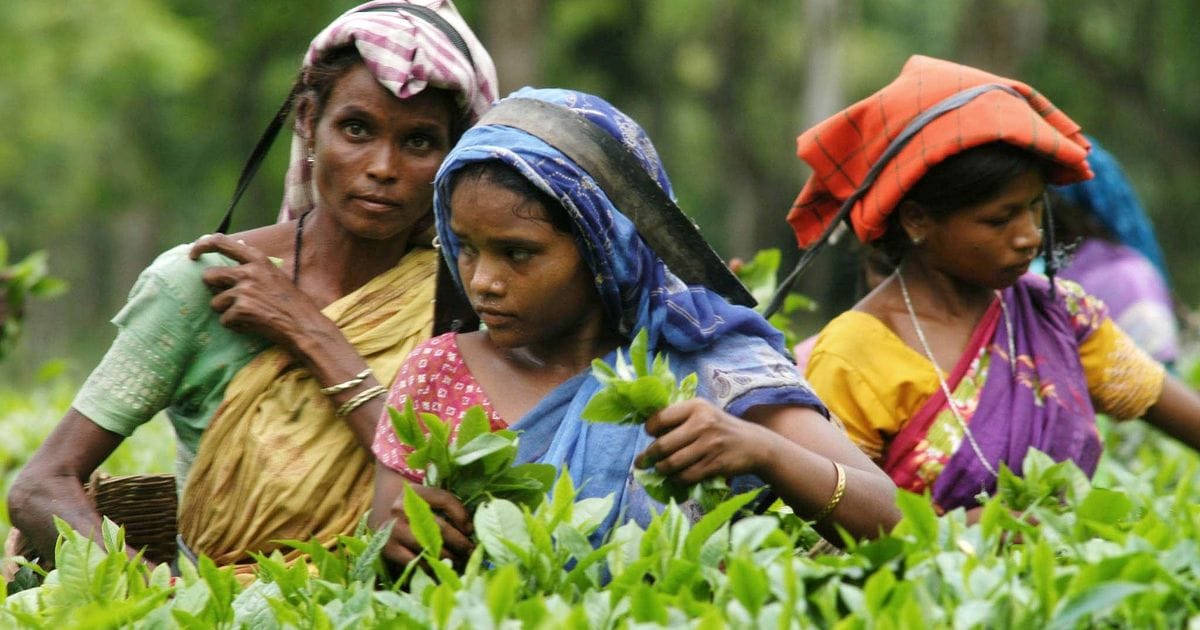

This protest has witnessed new Generation artist and their creativity at most. These artist definitely deserved an article on them. They are heroes they hold pen papers and colours to fight fascism.
We are all Indians, our destination is the same, no one can come out of this country, whether Hindu or Muslim, we all have the same color of blood.
best psychologist in india